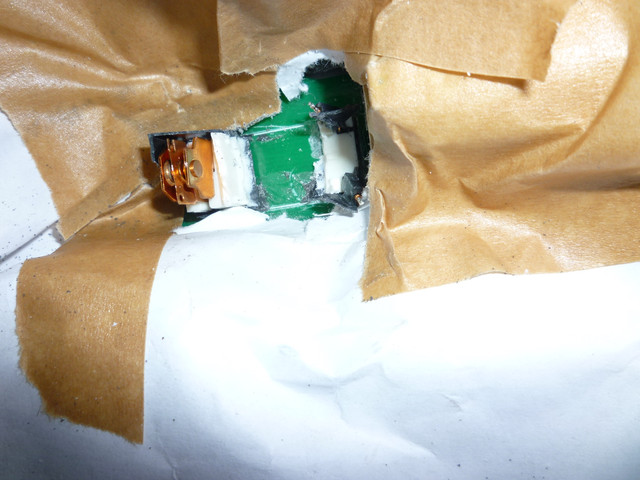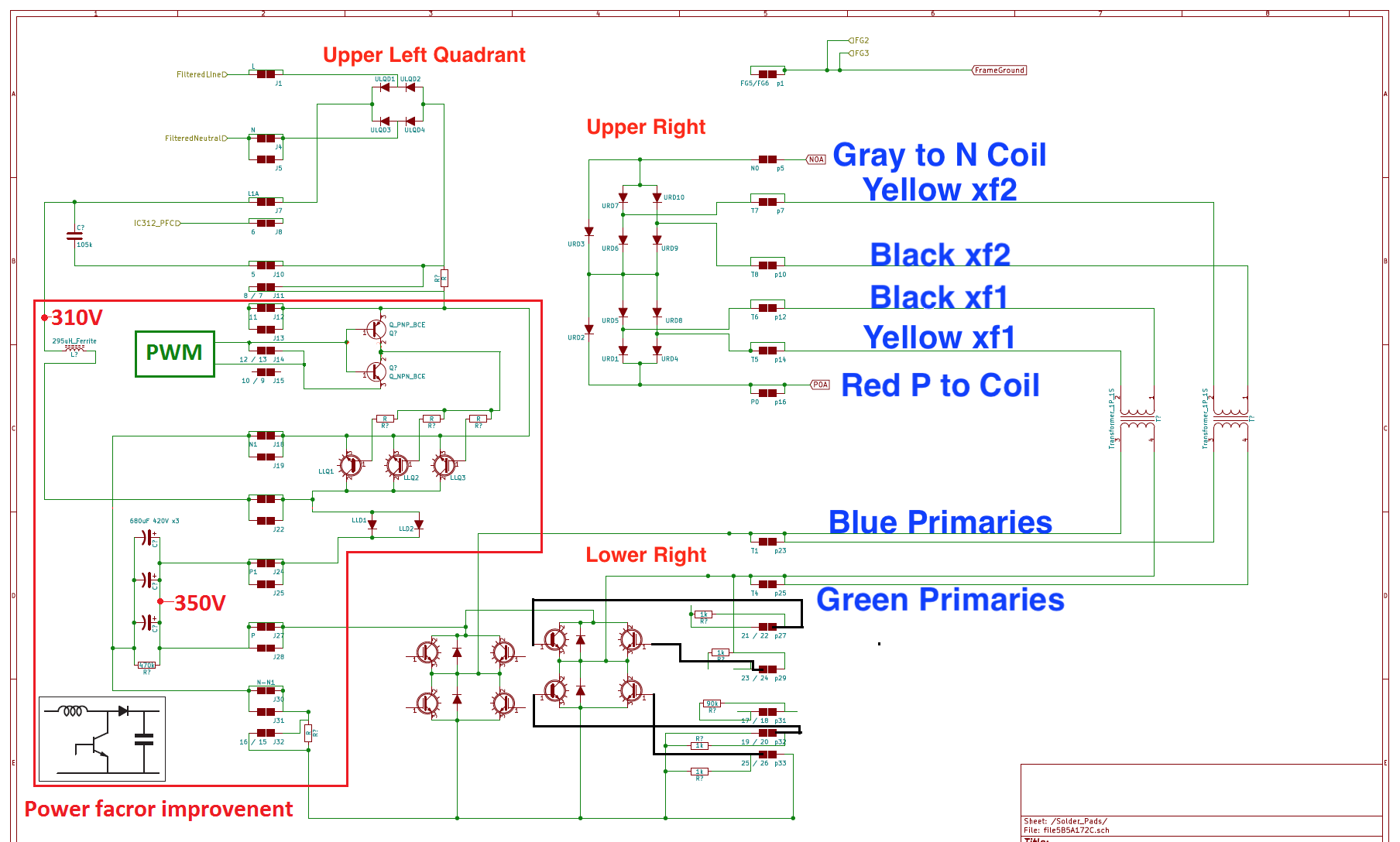iMiEV OBC burned comonents:
The mess on the left is what's left of the mains input capacitor next to the pre-charge resistors.
The 7 W resistor on the right, split open as it is, read only slightly high resistance. The 10 W resistor with the internal fuse was open circuit. The capacitor was in really bad shape as you can see, and part of it is still stuck to the PC board.
I found that the datasheet for the relay (part number FTR-K1AK005W-KW) no longer exists. I fished it out from Archive.org:
https://forums.aeva.asn.au/download/file.php?id=5663
Hosted on AEVA, since imgur has gone crazy lately with infinite loops and ads taking way too long to load.
It seems that the replacement for this that is available in small quantities is this one from Mouser:
https://www.mouser.com/ProductDetail/Fujitsu/FTR-K1AK005T?qs=5%2FYMc%252BrlISZLaQmi2F6OEA%3D%3D
For Australian owners: https://au.mouser.com/ProductDetail/Fujitsu/FTR-K1AK005T?qs=5%2FYMc%252BrlISZLaQmi2F6OEA%3D%3D
The relay in this charger seems OK, but I'm suspicious of the relay drive and/or power supply.
Unfortunately, it's not a 105°C rated part like the original, but it does have an impressive 80 A inrush current rating (for 10⁴ operations; normal use is 10⁵ operations).



































